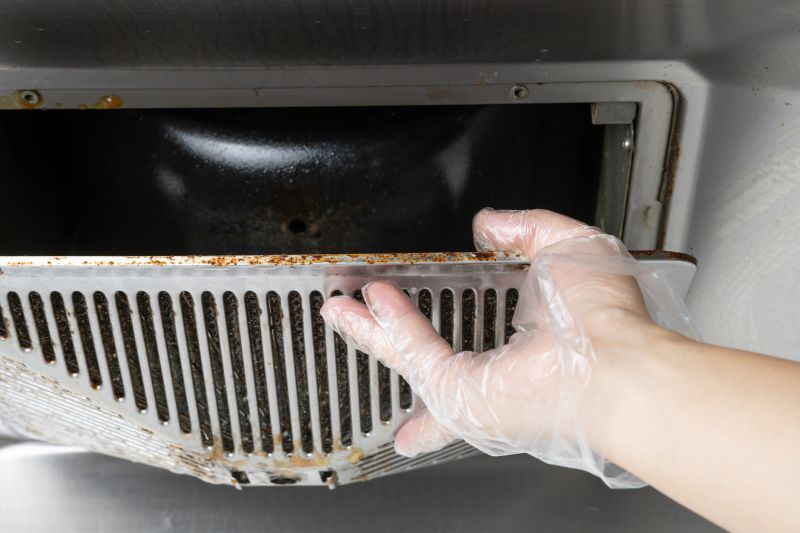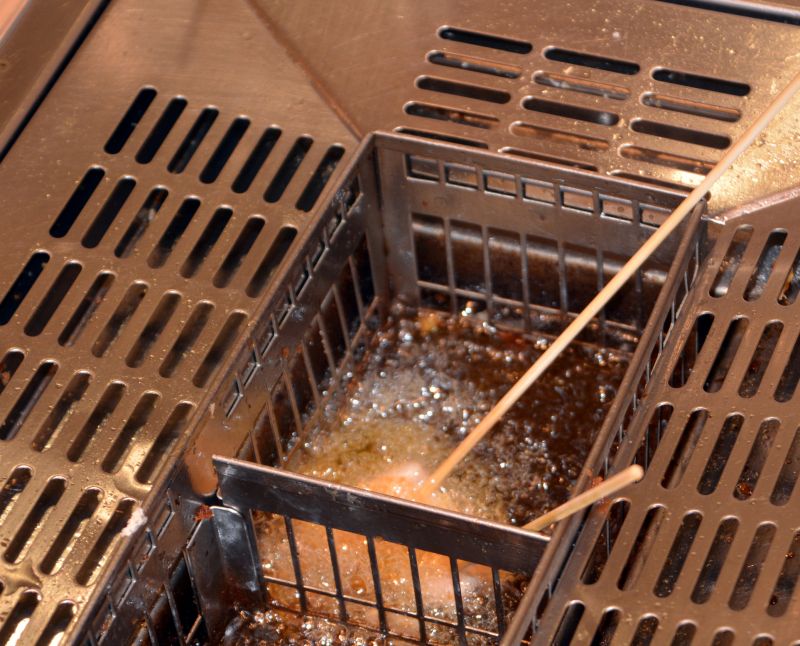Get Grease Trap Installation in Pierce County, WA
Local contractors in Pierce County, WA, can install grease traps to prevent plumbing clogs and odors for restaurants, cafes, and commercial kitchens.
Property owners in Pierce County, WA, who are planning commercial or residential plumbing projects often recognize the importance of properly installed grease traps. These systems are essential for maintaining compliance with local regulations, preventing plumbing backups, and protecting the integrity of wastewater systems. Exploring options for grease trap installation can help ensure that a property’s plumbing functions smoothly and efficiently, reducing potential disruptions and costly repairs down the line.
For those considering grease trap installation, connecting with experienced local contractors can provide valuable insights into the best solutions tailored to specific property needs. Comparing the services offered by nearby providers allows property owners to find knowledgeable professionals who understand the unique requirements of Pierce County’s plumbing landscape. Continuing to explore these options can support informed decisions and successful project planning.
- Commercial Kitchen Installations - businesses in Pierce County, WA may need grease trap installation when setting up or upgrading their kitchen facilities.
- Restaurant Renovations - eateries undergoing renovations in neighborhoods like Tacoma or Lakewood might require new grease traps to meet health regulations.
- Food Processing Facility Upgrades - food production plants in the area may need grease trap services during expansion or equipment updates.
- New Construction Projects - contractors building new restaurants or cafeterias in local neighborhoods often require grease trap installation as part of the plumbing setup.
- Existing System Repairs or Replacements - property owners in Pierce County needing to replace or upgrade aging grease traps can connect with experienced local contractors.



Grease trap installation is a service that involves placing a specialized tank beneath a commercial or residential property’s plumbing system to capture fats, oils, and grease (FOG) before they can enter the main sewer line. These systems are designed to intercept greasy substances from kitchen drains, preventing blockages and backups that can cause costly plumbing issues and sanitation problems. Proper installation ensures that the grease trap functions effectively, helping property owners maintain a clean and compliant drainage system. Local contractors experienced in grease trap installation can assess the specific needs of each property and recommend the appropriate size and type of system for optimal performance.
This service addresses common problems associated with grease buildup in plumbing systems. When FOG is not properly managed, it can solidify and accumulate, leading to clogged pipes, foul odors, and potential overflows that threaten property cleanliness and safety. In commercial settings such as restaurants, cafeterias, and food processing facilities, grease trap installation is often a critical part of maintaining operational efficiency and meeting health regulations. Homeowners with large or busy kitchens may also benefit from a properly installed grease trap to prevent plumbing issues caused by cooking fats and oils, especially in properties with multiple tenants or frequent entertaining.
Grease trap installation is typically necessary for properties that generate significant amounts of greasy wastewater. Commercial kitchens, including restaurants, cafes, hotels, and catering businesses, are the most common users due to their high volume of cooking and dishwashing activities. Additionally, some multi-family residential buildings or community facilities with shared kitchens may require these systems to stay compliant with local codes. Even some larger home-based businesses that prepare and serve food might find it beneficial to have a grease trap installed to avoid plumbing problems and ensure smooth drainage. Local service providers can help property owners determine whether a grease trap is suitable for their specific needs.
Choosing the right professional for grease trap installation ensures the system is correctly fitted and functions reliably over time. Experienced local contractors understand the requirements of properties in Pierce County, WA, and nearby areas, providing tailored solutions that meet local codes and standards. Proper installation can help prevent costly repairs, reduce downtime, and promote a cleaner, more efficient plumbing system. Contacting a qualified service provider can ensure the installation is handled correctly, giving property owners peace of mind that their drainage system is protected from grease-related issues.
The overview below groups typical Grease Trap Installation projects into broad ranges so you can see how smaller, mid-sized, and larger jobs often compare in Pierce County, WA.
In many markets, a large share of routine jobs stays in the lower and middle ranges, while only a smaller percentage of projects moves into the highest bands when the work is more complex or site conditions are harder than average.
Smaller Repairs - Typical costs for minor grease trap repairs or cleaning range from $250 to $600. Many routine jobs fall within this middle range, depending on the size and accessibility of the trap.
Standard Installation - Installing a new grease trap usually costs between $1,000 and $3,000. Local contractors often see most projects in this range, with larger or more complex setups reaching higher prices.
Full Replacement - Replacing an entire grease trap can cost $3,500 to $6,000 or more. Larger, more intricate systems or those requiring extensive excavation tend to push costs into the higher end of this spectrum.
Complex or Custom Projects - Custom or large-scale grease trap installations can exceed $6,000, especially for specialized systems or challenging site conditions. These projects are less common but may be necessary for certain commercial facilities.
Actual totals will depend on details like access to the work area, the scope of the project, and the materials selected, so use these as general starting points rather than exact figures.
Septic Tank Installation - this project involves planning and installing underground systems, similar to the setup required for effective grease trap placement and connection.
Drainage System Installation - installing drainage networks requires knowledge of plumbing, site planning, and proper pipework, paralleling the skills used in grease trap setup.
Commercial Plumbing Services - commercial plumbing projects often include installing and maintaining waste management systems, aligning with grease trap installation expertise.
Stormwater Management System Installation - designing and installing systems to manage runoff involves similar planning and underground work as grease trap systems.
Kitchen Plumbing Renovations - remodeling projects that involve new sink and drain connections require plumbing skills comparable to those needed for grease trap installation.
Wastewater System Upgrades - upgrading or installing new wastewater systems involves planning and technical work similar to setting up grease traps for commercial properties.

When evaluating contractors for grease trap installation, it's important to consider their experience with similar projects. Homeowners should look for service providers who have a track record of successfully completing work comparable to the specific needs of their property. Asking about previous installations or requesting examples of past work can help gauge a contractor’s familiarity with local regulations and the unique requirements of properties in Pierce County and surrounding areas. An experienced professional is more likely to understand the nuances of proper installation, ensuring the system functions effectively and meets local standards.
Clear, written expectations are essential when selecting a service provider. Homeowners should seek contractors who can provide detailed descriptions of the scope of work, including materials used, installation procedures, and any necessary permits or inspections. Having this information in writing helps prevent misunderstandings and ensures that both parties are aligned on project goals. It’s also helpful to clarify the contractor’s approach to addressing any unforeseen issues that might arise during installation, fostering transparency and confidence in the process.
Reputable references and strong communication are key factors in choosing the right professional. Pros with a history of satisfied clients can often provide references or testimonials that speak to their reliability and quality of work. Good communication from the outset-such as responsiveness to questions and clarity about the process-can make the project smoother and more predictable. Homeowners should prioritize service providers who demonstrate professionalism and a willingness to keep them informed throughout the project, helping to build trust and ensure a positive experience from start to finish.
Property owners in Pierce County, WA use Grease Trap Installation services for practical projects around their homes and businesses. This guide focuses on everyday jobs and straightforward project options.


Grease trap installation is often needed for commercial kitchens, restaurants, and food service establishments in Pierce County, WA, where proper waste management is essential for smooth operations. Property owners may seek professional services when upgrading or replacing outdated grease traps to ensure compliance with local regulations or to prevent plumbing issues caused by grease buildup. Local contractors can handle installations efficiently, helping businesses maintain a clean and functional kitchen environment without disrupting daily activities.
Additionally, property owners of mixed-use buildings or industrial facilities might look for grease trap services when expanding their operations or addressing plumbing blockages. Regular installation or maintenance by experienced service providers can help prevent costly backups and ensure wastewater flows properly. Connecting with local contractors who specialize in grease trap work can provide peace of mind, knowing the job is handled by those familiar with Pierce County’s specific requirements and conditions.
What is involved in grease trap installation? Grease trap installation typically includes assessing the site, digging trenches, setting the trap, and connecting it to the plumbing system. Local contractors handle the entire process to ensure proper setup and compliance with local codes.
How do I know if I need a new grease trap? A service provider can evaluate your current system and determine if a new grease trap is necessary based on its condition, capacity, and your business needs.
Are there different types of grease traps available? Yes, there are various types of grease traps, including underground, above-ground, and automatic models. Local service providers can recommend options suitable for your facility.
What should I consider before installing a grease trap? Factors to consider include the size of your operation, available space, plumbing compatibility, and local regulations. Consulting with local contractors can help identify the best solution.
Can grease trap installation be integrated into existing plumbing? Yes, experienced local contractors can typically integrate a new grease trap into existing plumbing systems, ensuring proper function and compliance with local standards.
Grease trap installation for restaurants and commercial kitchens - ensures proper waste management to prevent plumbing issues and odors during daily operations.
Residential property grease trap setup - helps homeowners maintain clean drainage systems when managing large-scale kitchen waste.
Upgrading or replacing existing grease traps - allows property owners to improve waste handling efficiency as their kitchen needs evolve.
Custom grease trap solutions for food service businesses - supports compliance with local regulations and enhances overall kitchen sanitation.

If you are thinking about Grease Trap Installation for a property in Pierce County, WA, this guide is meant to help you understand the work, the typical project types, and how different options might fit your plans.
When you are ready, you can use the quote form on this page to share a few details about your project. From there, local pros can review the basics and respond with options that match what you have in mind.



